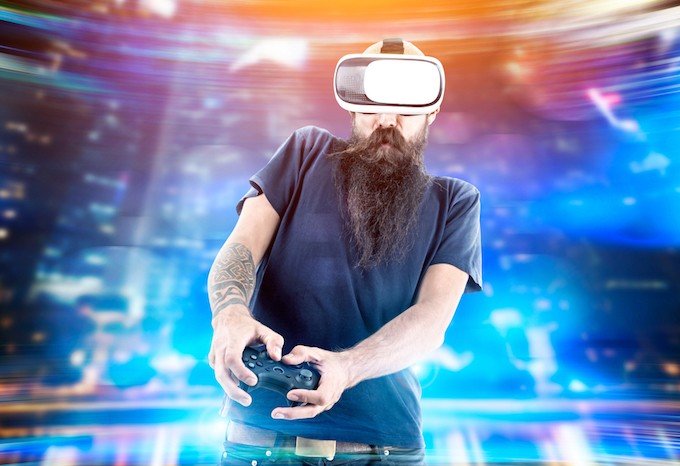
FCB hosted its monthly School House session last week to discuss the possibilities for Virtual Reality (VR) for marketers beyond just gaming and entertainment. To interrogate the topic it invited, CEO of Imersia Dr Roy Davies, co-chair of IGDA Virtual Jamie Telford, VR producer at Conical Alejandro Davila and managing director of Pik Pok Mario Wynands, to be part of a panel hosted by FCB digital strategy director Dan West.
Interestingly VR is not new, as Davies pointed out. We have been on a road to what we currently know of as VR for over 200 years, starting with the stereoscope. Even those plastic viewfinders we all picked up from Disneyland as children are part of that VR journey. And like the viewfinder, modern day VR will have a large part to play in the tourism industry. Many businesses such as Air New Zealand, who offered a futuristic view of travel as part of their 75 year anniversary exhibition, are looking into it as a way of allowing customers to try before they buy—something not previously possible.
But VR offers more than just simply transporting us to other locations, and Telford explained some of the psychological considerations surrounding it. This discussion soon led to whether immersive VR environments affect memories in a different and more engrained way than simply watching a TV. Some research apparently suggests it does. For advertisers, this is incredibly compelling, as it would imply that brand experiences in a VR environment are more memorable or engrained than something shown on a standard TV. But more than that, it offers some exciting implications for VR as a teaching tool. Not only can VR be used to help children learn about the Jurassic period or Captain Cook’s landing in New Zealand, it can help businesses teach staff about company culture and history or even shop floor selling tactics.
This is something Davila from Conical is already pursuing for some clients. Taking his experience from delivering the incredibly immersive story telling VR experience of The Green Fairy, which recently toured New Zealand’s Westfield shopping centres in early October, Davila has begun to tell VR stories for businesses. He has already developed a VR experience for a New Zealand technology retailer as part of their health and safety training. You can see how VR could become the future of mass staff training, as you don’t have the expense of flying people to a training centre or the tedium of watching a webinar on a potentially dry topic.
But we can’t ignore the power of VR gaming and the opportunity it offers as a channel in the future, according to Wynands. With PlayStation having launched their VR product last month in New Zealand, this is a growing opportunity for brands to create collaborations with VR game developers. Wynands spoke about Pik Pok’s incredibly popular VR game ‘Into the Dead’ collaborating with TigerTime, a New Zealand Tiger conservation charity, to offer players the opportunity to purchase a tiger to be your companion in this zombie apocalyptic world. These co-branded VR experiences can be a great opportunity for brands to reach customers in an innovative and immersive way.
According to Gartner’s Hype Cycle, VR is only going to grow as an opportunity for brands and is not just a passing fad. As West concluded: “Brands need to start to build a VR strategy. VR has the potential to help people with depression, teach someone how to build a fence without fear of getting it wrong, or ‘cure’ someone’s fear of flying. Yes, VR offers incredible gaming and content experiences but that is just the tip of the iceberg.”




